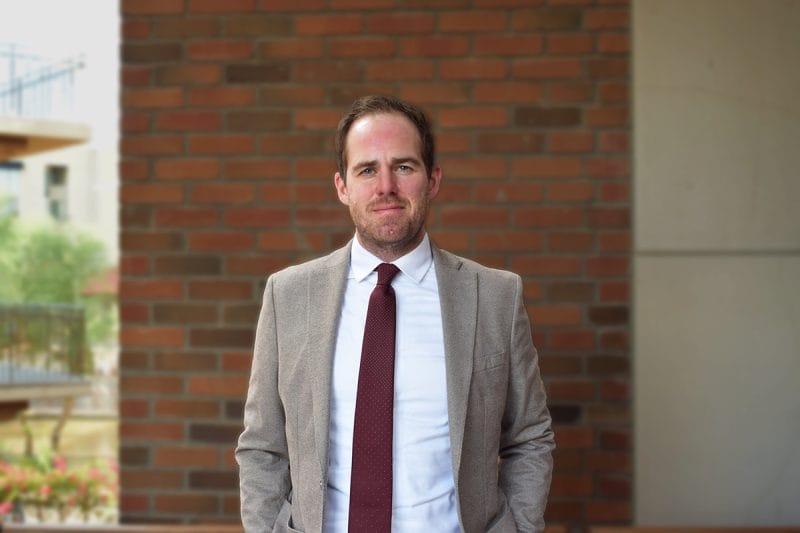
ELLIOTT D. POLLACK
& Company
FOR IMMEDIATE RELEASE
September 18th, 2017
The Monday Morning Quarterback
A quick analysis of important economic data released over the last week
The U.S. has never before had two Category 4 hurricanes make landfall in the same year, much less within a few weeks of each other. It already looks like Hurricane Harvey will be one of the costliest natural disasters in the post-war era. Hurricane Irma has produced further significant damage but apparently did not inflict the catastrophic losses on the U.S. mainland that were originally anticipated.
While significant natural disasters reduce economic activity and growth in the short run, they are soon followed by a boost of rebuilding activity and growth as damage is repaired and disrupted services activity resume. Congress recently approved $15 billion in hurricane relief. This should go a long way toward speeding up the recovery.
According to those who study such things, some effects from Harvey are already showing up in the economic data. Information such as initial unemployment claims, employment reports for September and October, gas prices and housing starts will all be negatively affected. On the other hand, according to some new car and light truck sales that had softened in recent months could jump in the near term. Thus, it will be important to judge data in context over the next several months. This could become a little tricky and perhaps give false signals.
The positive is that the economy seems to be functioning well at the present time. Thus, there is good reason to believe that the current expansion will continue its upward trajectory. This is clearly a plus at a time when the economy could use a plus.
U.S. Snapshot:
-
The consensus forecast for Real GDP for 2017 has inched back up to 2.2% on a year over year basis. The consensus also believes, for the 9th straight month, that 2018 will see 2.4% year over year real growth in GDP.
-
According to the University of Michigan consumer sentiment index, hurricanes Harvey and Irma cut into consumer sentiment but not by much. The preliminary sentiment index for September fell to 95.3 from 96.8 in August. A year ago, the index stood at 91.2.
-
U.S. retail and food service sales for August declined 0.2% from July but were up 3.2% from year earlier levels.
-
The manufacturing and trade inventories to sales ratio remained at 1.38 in July. This is the same as June’s result. It is down slightly from 1.40 a year ago. This seems to indicate that manufacturers are keeping their inventories under control.
-
Industrial production declined 0.9% in August after following six consecutive monthly gains. Due to Hurricane Harvey, which hit the Gulf Coast of Texas in late August, the rate of change in total output was reduced by roughly 3/4 of a percentage point. The manufacturing industries with the largest estimated storm-related effects were petroleum refining, organic chemicals, and plastics materials and resin.
-
Consumer prices were up 0.4% in August and now stand 1.9% above a year ago. Excluding the volatile food and energy sectors, the increase was a more normal 0.2% for August and 1.7% year over year.
Arizona Snapshot:
-
Arizona’s seasonally adjusted unemployment rate declined from 5.1% in July to 5.0% in August. The U.S. numbers were 4.3% in July and 4.4% in August. A year ago, the unemployment rate in Arizona was 5.1% compared to 4.9% nationally.
-
Arizona gained 41,900 nonfarm jobs in August. This is modest when compared to gains for similar periods during this cycle. Compared to a year ago, 35,900 jobs (1.3%) were gained. The largest gains were in leisure and hospitality, education and health services, financial activities and manufacturing.
-
On a year-to-date basis, job growth in the state ranks 13th out of 50.
-
Greater Phoenix continues to lead the state in job creation in both absolute and percentage terms. In August, the area created 34,900 jobs when compared to a year ago (1.8%). On a year-to-date basis, Greater Phoenix has created 47,100 jobs compared to the same time period a year ago (2.4%). This equates to about 93% of all the jobs created in the state over that period of time. The unemployment rate in Greater Phoenix was 4.3%.
-
The Greater Phoenix area now ranks 10th out of 34 major employment markets in the country in terms of percentage growth for the first 8 months of 2017 compared to the first 8 months of 2016.
-
Greater Tucson had employment growth of 0.4% in August when compared to August 2016. On a year-to-date basis, Tucson has grown by 1,400 jobs. This is a modest 0.4% gain.
About EDPCo
Elliott D. Pollack & Company (EDPCo) offers a broad range of economic and real estate consulting services backed by one of the most comprehensive databases found in the nation. This information makes it possible for the firm to conduct economic forecasting, develop economic impact studies and prepare demographic analyses and forecasts. Econometric modeling and economic development analysis and planning are also part of our capabilities. EDPCo staff includes professionals with backgrounds in economics, urban planning, financial analysis, real estate development and government. These professionals serve a broad client base of both public and private sector entities that range from school districts and utility companies to law firms and real estate developers.
For more information, contact –
Elliott D. Pollack & company
7505 East Sixth Avenue, Suite 100
Scottsdale, Arizona 85251
480-423-9200







